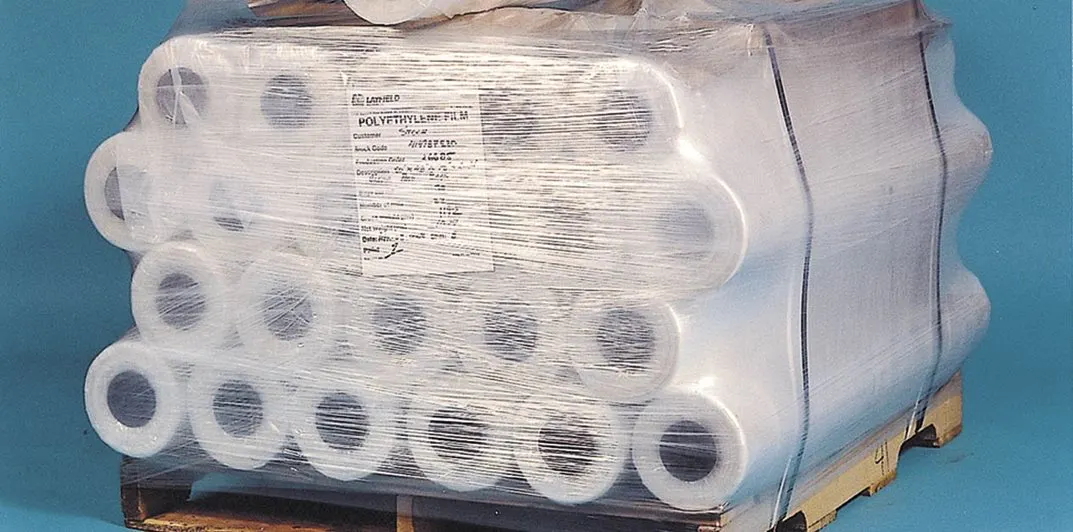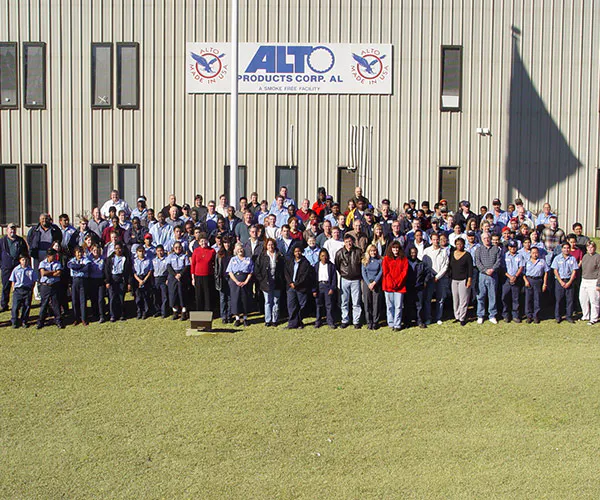Layfield Group improves inventory management and saves
As a result of installing UpKeep, Layfield Group has shifted more of its work from reactive maintenance to preventive maintenance, reduced costs, and increased efficiency. In addition, UpKeep has allowed the company to keep up with a myriad of maintenance demands in the midst of a labor shortage.

Layfield Group Limited is dedicated to providing construction materials, packaging solutions, and medical products tailored to suit customer needs. When the company decided to shift its maintenance system away from a cumbersome, administratively demanding one, executives selected UpKeep’s mobile-first solution as the perfect answer.
Challenge
Dave Brandle, facilities and safety manager at Layfield Group Limited, had relied on paper systems to manage work orders for many years. These antiquated systems involved manually writing down tasks, time taken, and parts used. Dave was forced to waste valuable time being his own administrator, and the systems were awkward and inefficient.
“Basically, it was a huge struggle,” he said.
Solution
After Dave and his maintenance team decided to switch to an online system, they tested a few before selecting UpKeep was the best fit.
“When I was looking for a mobile computerized maintenance management system (CMMS), I tried about three or four different ones, and UpKeep definitely seemed to be the most intuitive for my team,” Dave said.
As a result of installing UpKeep, Layfield Group has shifted more of its work from reactive maintenance to preventive maintenance, reduced costs, and increased efficiency. In addition, UpKeep has allowed the company to keep up with a myriad of maintenance demands in the midst of a labor shortage.
Results
The Layfield Group saves thousands of dollars in lost time. Previously, an employee might spend an hour or two looking all over the factory for a specific part that was not available. Now, this employee can spend two minutes looking up a part in UpKeep and immediately see the part, quantity available, and location. This ability to locate parts faster means rapid repair and less downtime. At Layfield Group, a machine down for one hour can mean $10,000 in lost revenue.
Reducing the Administrative Burden
Dave had used a paper book system to keep his technicians on track before the internet. Tasks were manually written down and checked off.
After the birth of the internet, the company upgraded to an online system.
“That system involved printing out work orders,” Dave explained. “I gave the paper workorders to the guys, and they wrote on them what they did, how long it took, and any parts they used. I’d get those papers back and punch the information back into the system. It was the next step after paper, but I basically had to do everything manually."
For Dave, being his own administrator consumed valuable time. He eventually passed the job off to a senior employee but realized that the loss of wrench time wasn’t worth it. “I then pawned the administrative duties off on a junior guy to get that time back for my senior guy,” Dave said.
The factory, a Films plant, runs 24/7 and only stops if they lose power. “Using our old paper systems, we simply didn’t have the administrative bandwidth to run it the way I would like it,” Dave explained. “looking after three production facilities, with about $35 million worth of machinery, in addition to a campus and the grounds. And we have a staff of 10—myself and nine others.”
All Employees Can Report Problems
Since Dave is responsible for three buildings, a facility, and a campus, it makes a big difference that other employees can submit work requests if they notice something is amiss or requires repair.
“All of my supervisors in the production facility can put in work orders and requests,” Dave said. “Everyone on the campus has access as well, so employees can notify us when their office AC is broken, a ceiling panel is loose, or a desk drawer isn’t working. If anybody in our facility notices that something doesn’t look right, they can take a picture of it and submit a request. I can confirm if it needs work and then create a work order for one of our technicians.”
With everyone looking out for problems and reporting them, issues can be discovered and remedied much more efficiently.
Inventory Management Means Faster Repairs
Managing maintenance for 1,500 machines becomes even more complicated when you don’t know whether you have replacement parts in stock or, if you do, where they are located. Before UpKeep, Layfield Group had trouble keeping track of parts in an organized manner.
“Now, any of my guys can pull their phone or tablet out and see what we have for inventory,” Dave said. “They no longer have to check the spare parts bin. We have parts cabinets specific to each machine, so when a machine breaks down, we can quickly check if we have the right part, send a work order, and get the machine fixed right away.”
Being able to manage parts through UpKeep saves Layfield Group thousands of dollars in lost time. “It gets us up and running in 10 minutes versus someone running around trying to figure out if we have the part,” Dave added. “That individual might chase all over the factory for an hour or two trying to find a part that’s not there. In two minutes, he can go on the CMMS and see the part number, availability and location.”
In the future, Layfield Group plans to use QR tags to make asset management even faster and prevent machine mix-ups.
Better Data Means Easy Reporting
“When we were using a paper system, we didn’t really have a way to easily generate reports,” Dave explained. “There wasn’t a way to analyze information.
“We couldn’t monitor our machines very well,” he continued. “But now, we can generate reports off of anybody's CMMS, and we can figure out how much maintenance a certain machine has needed in the past and how much it’s costing us in terms of time and money.”
Dave said that simply knowing a machine’s maintenance history makes all the difference. During the days of the paper systems, many of the technicians were relying on their memories, which weren’t always accurate.
Now, if a certain machine breaks down multiple times over a short period, the technicians know exactly what has been replaced, how many times it was replaced, and when it was replaced.
“Instead of having the pile-up of little problems nagging in the back of your mind, we have these reports to tell us exactly when parts were replaced and how much it’s costing,” Dave pointed out. “Our memories aren’t always great at keeping track of 1,500 machines.”
Saving Money With a Shift to Preventative Maintenance
For the company, machine downtime can be extremely expensive. “If a machine’s not running for an hour, that could be $10,000 in lost revenue,” Dave said.
Dave explained the huge difference between reactive and preventative maintenance. “With reactive, you’re basically always chasing the problem, because you don’t know what’s broken until it’s already happened,” he said. “On the other hand, preventative maintenance tries to stop machines from breaking down in the first place.”
Reactive maintenance can be extremely expensive, since the company is forced to pay to get parts quickly shipped to its location. Preventative maintenance, however, allows for more time to transport parts.
Now that technicians have made the transition to UpKeep, they have access to machines’ maintenance histories and parts inventories, allowing them to shift more time to preventative maintenance tasks.
Fewer Staff Needed Allows for Apprenticeship Program
“There’s been a problem in the industry of maintenance over the last few years,” Dave explained. “In the past, industrial machine maintenance was typically done by millwrights. However, the recent generations haven’t wanted to be tradespeople—they’d rather be computer programmers, doing their work from a computer and not getting dirty.”
Many of the older, experienced millwrights are retiring, adding to the problem. This led to a difficult situation for Layfield Group.
“I was in a position where I couldn’t hire millwrights,” he said. “They were so much sought after that we had to pay them $50 an hour just to get them to show up.”
Since millwrights were becoming so expensive to hire, the company decided to start training its own. “We started our own apprenticeship program,” Dave said. “At the moment, we have three apprentices paired up with experienced millwrights who will mentor them for four years.”
Having the program meant that three of Dave’s experienced technicians were only able to work about half the time they’d been working before. However, with UpKeep, the company has been able to keep up with the work despite the reduced staff, and Dave credits UpKeep with allowing them to run their apprenticeship program.
Want to keep reading?

Equipment / Manufacturing
Alto Products moves from reactive to preventive maintenance

Equipment / Manufacturing
Innovative Micro Technology creates a safety-focused culture

Equipment / Manufacturing
Columbia Fruit saves money with organized inventory
4,000+ COMPANIES RELY ON ASSET OPERATIONS MANAGEMENT
Leading the Way to a Better Future for Maintenance and Reliability
Your asset and equipment data doesn't belong in a silo. UpKeep makes it simple to see where everything stands, all in one place. That means less guesswork and more time to focus on what matters.


![[Review Badge] GetApp CMMS 2022 (Dark)](https://www.datocms-assets.com/38028/1673900459-get-app-logo-dark.png?auto=compress&fm=webp&w=347)
![[Review Badge] Gartner Peer Insights (Dark)](https://www.datocms-assets.com/38028/1673900494-gartner-logo-dark.png?auto=compress&fm=webp&w=336)
